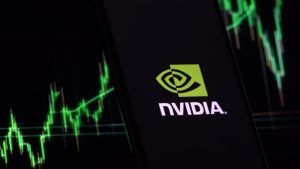For more than two years, Wall Street has been a stomping ground for the bulls. Since the curtain opened for 2023, the mature stock-powered Dow Jones Industrial Average (DJINDICES: ^DJI), benchmark S&P 500 (SNPINDEX: ^GSPC), and growth-inspired Nasdaq Composite (NASDAQINDEX: ^IXIC) have respectively rocketed higher by 34%, 58%, and 88%.
Investors haven’t had to dig too deeply for catalysts behind this rally. In no particular order, the current bull market owes its thanks to:
-
A resilient U.S. economy.
-
Better-than-expected corporate earnings.
-
A decline in the prevailing rate of inflation from a four-decade high of 9.1%.
-
Excitement surrounding stock splits.
-
Donald Trump’s return to the White House.
But as Wall Street has reminded investors for more than a century, when things seem too good to be true, they usually are.
Though the Dow Jones, S&P 500, and Nasdaq Composite all recently hit fresh all-time highs, one time-tested valuation tool, which was once endorsed by billionaire investor Warren Buffett, is also in uncharted territory — but not in a good way.
There is no one-size-fits-all definition when it comes to “value.” What one investor considers to be expensive might be viewed as a bargain by another. Nevertheless, there are a handful of tried-and-true valuation tools that investors have relied on over the years to determine whether a stock, or the broader market, is relatively cheap, pricey, or somewhere in between.
Most investors are probably familiar with the price-to-earnings (P/E) ratio, which divides a company’s share price into its trailing-12-month earnings per share. This quick valuation measure tends to work wonders on mature businesses, but it’s not particularly useful for growth stocks or during periods of economic turbulence.
A far better measure of value on Wall Street, according to Berkshire Hathaway‘s (NYSE: BRK.A)(NYSE: BRK.B) “Oracle of Omaha,” is what’s now known as the “Buffett Indicator.” The Buffett Indicator divides the total market cap of all U.S.-traded stocks into U.S. gross domestic product (GDP).
In an interview with Fortune magazine in 2001, Berkshire’s chief referred to the market-cap-to-GDP ratio as “probably the best single measure of where valuations stand at any given moment.”
When back-tested to 1970, the Buffett Indicator has averaged a reading of 85%. This is to say the total market cap of all U.S. stocks has averaged 0.85 times as much as U.S. GDP over the last 55 years.



